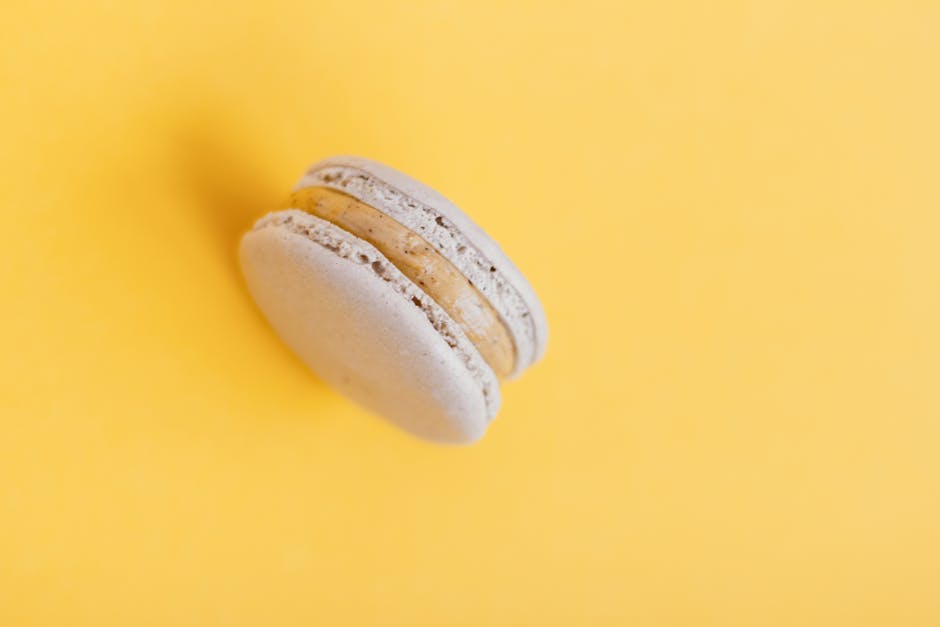The classic Quiche Lorraine, a culinary masterpiece originating from the Lorraine region of northeastern France, is more than just a savory tart; it’s a testament to the region’s rich history and culinary traditions. Its origins are somewhat shrouded in mystery, with some culinary historians tracing its roots back to the Middle Ages, where similar savory tarts filled with various ingredients were common. However, the recipe we recognize today, featuring a buttery crust, creamy custard, and smoky bacon, solidified its identity during the 19th century, possibly emerging from humble peasant dishes that slowly evolved into the sophisticated dish we enjoy now. While pinpointing the exact inventor is impossible, its enduring popularity speaks volumes about its inherent deliciousness and versatility.
Quiche Lorraine’s cultural significance is undeniable. It’s a staple in French cuisine, often served as a brunch item, a light lunch, or even as part of a larger dinner spread. Beyond France, it’s achieved global recognition, becoming a beloved dish in many countries, adapted and tweaked to suit local palates. Interestingly, nearly 80% of French households report making or consuming quiche at least once a month, highlighting its pervasive presence in daily life. This popularity isn’t just a matter of taste; it’s also linked to practicality. Quiche is incredibly versatile: leftovers can be easily reheated, making it a perfect meal-prep option, and the recipe itself is easily adaptable to seasonal ingredients and dietary preferences.
The dish’s enduring appeal lies in its perfect balance of flavors and textures. The crisp, buttery crust provides a delightful contrast to the creamy egg custard, while the smoky bacon adds a savory depth. The traditional recipe uses lardons, small cubes of smoked bacon, but variations using pancetta or even ham are common. This adaptability, combined with its relatively straightforward preparation, has contributed to its global popularity. Whether enjoyed in a Parisian bistro or a home kitchen thousands of miles away, Quiche Lorraine remains a culinary icon, a testament to the enduring power of simple, yet exquisitely balanced, ingredients.
Beyond its deliciousness, Quiche Lorraine holds a significant place in culinary history, representing the evolution of simple peasant food into a globally recognized delicacy. Its ability to adapt and evolve while retaining its core essence is a key factor in its continued success. This recipe, therefore, offers more than just instructions; it’s a journey through time, flavor, and the rich cultural heritage of France.
Ingredients and Measurements
Crafting the perfect Quiche Lorraine relies heavily on the quality and precise measurement of your ingredients. Using fresh, high-quality ingredients will significantly elevate the flavor profile of your quiche. Below is a detailed list of ingredients and their precise measurements for a classic 9-inch quiche:
Pastry Dough:
- 1 1/4 cups (150g) all-purpose flour – Use a good quality flour for a tender, flaky crust.
- 1/2 teaspoon salt – Salt enhances the flavors of the other ingredients.
- 1/2 cup (113g) cold unsalted butter, cut into cubes – Using cold butter is crucial for a flaky crust. Work quickly to avoid melting the butter.
- 1/4 cup (60ml) ice water – Add gradually, mixing until the dough just comes together. Do not overmix.
Filling:
- 6 large eggs – Use fresh, large eggs for optimal binding and richness.
- 1 cup (240ml) heavy cream – Heavy cream provides richness and creaminess to the filling. You can substitute with a mixture of half-and-half and whole milk for a slightly lighter quiche.
- 1/2 cup (120ml) grated Gruyère cheese – Gruyère is the traditional cheese for Quiche Lorraine, offering a nutty and slightly sharp flavor. You can substitute with a blend of Swiss and Parmesan if needed.
- 1/2 cup (60g) diced bacon, cooked and crumbled – Use high-quality bacon for the best flavor. Ensure the bacon is thoroughly cooked and drained before adding to the filling to avoid a soggy quiche.
- 1/4 cup (30g) finely chopped yellow onion – Sautéing the onion before adding it to the filling will enhance its flavor and prevent it from being raw.
- 1/4 teaspoon freshly ground black pepper – Freshly ground pepper adds a subtle yet important spice note.
- Pinch of freshly grated nutmeg (optional) – A pinch of nutmeg adds a warm, subtle complexity.
Important Note: These measurements are for a 9-inch quiche. Adjust the quantities proportionally if using a different size quiche pan. Always pre-bake your crust for optimal results, preventing a soggy bottom.
Equipment and Utensils
Making a classic Quiche Lorraine requires the right tools to ensure a flawlessly baked and beautifully presented dish. While you might already have much of this in your kitchen, having the correct equipment will make the whole process smoother and more enjoyable.
Firstly, you’ll need a 9-10 inch pie dish. This size is ideal for a classic Quiche Lorraine, allowing for a good depth of filling without being overwhelmingly large. A non-stick pie dish is preferable, as it makes removing the finished quiche much easier. If you don’t have a non-stick dish, greasing the dish thoroughly with butter before adding the pastry will prevent sticking.
Next, you’ll need essential baking tools. A 9-inch rolling pin will be perfect for rolling out your pastry to the correct size. A pastry brush is invaluable for brushing the pastry with egg wash for a golden-brown crust. A measuring jug (at least 1 litre capacity) will be needed for accurate measurements of liquids, while a set of measuring cups and spoons is essential for dry ingredients.
For preparing the filling, a large mixing bowl (at least 4-litre capacity) is crucial for combining the eggs, cream, cheese, and bacon. A whisk is essential for thoroughly whisking the egg mixture to ensure a smooth and creamy consistency. A sharp knife is needed for dicing the bacon and onions (if using). A large frying pan will be helpful for pre-cooking the bacon to render out excess fat – this step prevents a soggy quiche.
Finally, consider these helpful additions: A pastry cutter can make the process of cutting the pastry neat and even. Oven mitts or gloves are essential for safely handling the hot pie dish when it comes out of the oven. And don’t forget the baking sheet; placing the quiche dish on a baking sheet helps to catch any spills during baking. A timer is crucial to ensure your quiche is baked to perfection, avoiding over- or under-baking.
Proper equipment significantly impacts the final result. Investing in good quality tools will not only make the process easier but also contribute to a superior quiche. Don’t underestimate the importance of sharp knives and well-fitting measuring utensils for achieving consistent results.
Filling Preparation (including bacon/lardons preparation)
Begin by preparing the bacon or lardons, which are crucial for the authentic flavour of Quiche Lorraine. For this recipe, we’ll use 6 ounces (170g) of smoked bacon, diced into approximately ½-inch cubes. Avoid using pre-cooked bacon bits; the rendering of the fat during cooking is essential for the richness of the quiche.
Place the diced bacon in a large, cold frying pan over medium heat. Do not add any oil; the bacon will render its own fat. Cook the bacon slowly, stirring occasionally, until it is golden brown and crispy. This process will take approximately 8-10 minutes. Avoid burning the bacon, as this will impart a bitter taste.
Once the bacon is cooked, remove it from the pan using a slotted spoon and set it aside on a plate lined with paper towels to absorb any excess grease. Reserve approximately 2 tablespoons of the rendered bacon fat in the pan. This fat will add incredible flavour to the custard mixture.
Next, prepare the remaining filling ingredients. You’ll need 1 medium onion, finely chopped; 2 cloves of garlic, minced; and 1 cup (140g) of grated Gruyère cheese (or a similar firm, nutty cheese). Using a good quality cheese is paramount for the overall taste of your quiche.
Add the chopped onion to the pan with the reserved bacon fat and cook over medium heat until softened and translucent, about 5-7 minutes. Then, add the minced garlic and cook for another minute until fragrant. Be careful not to burn the garlic, as this will make the filling bitter.
Once the onions and garlic are cooked, remove the pan from the heat and stir in the cooked bacon and grated Gruyère cheese. Set the mixture aside to cool slightly while you prepare the custard. Allowing the mixture to cool slightly prevents the cheese from melting excessively into the custard, resulting in a more even texture. This step is key to a perfect Quiche Lorraine.
Remember to taste the filling mixture at this stage and adjust seasoning as needed. A pinch of freshly ground black pepper is usually sufficient, but you can add a little salt if necessary. However, remember that the bacon and cheese are already quite salty, so be cautious.
Egg Mixture Preparation
Creating the perfect custard base for your Quiche Lorraine is crucial for a creamy, flavorful result. This section details the precise steps for preparing the egg mixture, ensuring a smooth and lump-free texture.
Begin by whisking together 4 large eggs in a medium-sized bowl. Use a vigorous motion to fully incorporate the yolks and whites, creating a light and airy consistency. Avoid over-whisking, as this can incorporate too much air and lead to a dry quiche. A simple, smooth blend is the goal.
Next, gradually whisk in 1 cup (240ml) of heavy cream. Adding the cream slowly while whisking continuously prevents clumping and ensures a homogeneous mixture. The heavy cream contributes significantly to the richness and creaminess of the final quiche. Use heavy cream, not milk or half-and-half; its higher fat content results in a superior texture.
Now, incorporate 1/2 cup (60g) of grated Gruyère cheese. Gruyère’s nutty and slightly sharp flavor complements the bacon and pastry beautifully. You can substitute with another strong, nutty cheese if desired, but Gruyère is traditional and highly recommended. Ensure the cheese is finely grated for even distribution throughout the quiche.
Season the mixture generously with salt and freshly ground black pepper. Taste the mixture and adjust seasoning as needed. Don’t be shy with the salt, as it helps to balance the richness of the cream and cheese. Freshly ground black pepper adds a subtle aromatic complexity.
Finally, add a pinch of nutmeg (approximately 1/4 teaspoon) for an extra layer of warmth and flavor. Nutmeg is a classic pairing with eggs and complements the other ingredients perfectly. Be careful not to over-spice; a little goes a long way.
Once all the ingredients are thoroughly combined, gently set the mixture aside. Avoid letting the mixture sit for too long before pouring it into the pastry crust, as this can cause the cheese to settle.
Professional Tip: For an even smoother mixture, strain the egg mixture through a fine-mesh sieve before adding it to the pastry crust. This removes any lumps and ensures a flawless final product.
Assembling the Quiche
With your pre-baked pastry crust ready and your filling components prepared, it’s time to assemble your Quiche Lorraine. This stage requires careful layering to ensure even cooking and a visually appealing final product. Begin by gently pouring approximately 1 ½ cups of the crème fraîche mixture into the prepared pastry shell. Spread the mixture evenly across the bottom, ensuring it reaches all corners but avoiding overflowing. This creates a consistent base for the other ingredients.
Next, distribute the cooked bacon evenly over the crème fraîche base. Aim for an even layer, avoiding clumping. Approximately 6 ounces of cooked, crumbled bacon should be sufficient. Don’t overload the quiche with bacon; this will affect the overall texture and flavor balance. A good distribution is key to ensuring every bite has a pleasing mix of flavors.
Now, carefully arrange the grated Gruyère cheese over the bacon. Use about 1 ½ cups of grated cheese. Avoid pressing the cheese down too firmly; a light scattering is sufficient. This allows the cheese to melt evenly during baking and creates a delightful stringy texture. Consider using a coarser grate for a more rustic appearance and texture.
Finally, crack the eggs directly onto the cheese. Use 4 large eggs for this recipe. Avoid breaking the yolks; aim for a neat placement of the whole eggs atop the cheese. This will ensure the eggs cook evenly and create a creamy, custardy center. Gently tilt the quiche tin to help the eggs spread slightly, but do not force them.
Before placing the quiche in the oven, take a moment to inspect your assembly. Ensure the edges of the pastry shell are neatly tucked in, preventing any spillage during baking. A final light sprinkle of freshly ground black pepper adds a touch of sophistication to the flavor profile. Now, your Quiche Lorraine is ready for the oven!
Professional Tip: For a truly elegant presentation, consider using a piping bag to carefully distribute the crème fraîche mixture, creating a smooth and even base. This is optional, but adds a touch of professional finesse.
Recommendations
For the best Classic Quiche Lorraine, ensure your crust is fully pre-baked to prevent a soggy bottom. Blind baking, using pie weights or dried beans, is highly recommended. Don’t overcrowd the quiche with filling; a slightly mounded filling is ideal. Allow the quiche to cool slightly before slicing to prevent it from crumbling. This also allows the flavors to meld beautifully.
Serving Suggestions: A Classic Quiche Lorraine is incredibly versatile. Serve it warm or at room temperature, sliced into wedges. It makes a perfect brunch item, a light lunch, or even a component of a larger dinner spread. Consider serving it alongside a simple green salad with a light vinaigrette for a refreshing contrast. Arugula or baby spinach would work particularly well.
Complementary Dishes: To enhance your Quiche Lorraine experience, consider pairing it with dishes that complement its rich and savory flavors. A side of roasted asparagus or sautéed mushrooms would add depth and texture. A fresh fruit salad offers a lovely counterpoint to the richness of the quiche. For a heartier meal, serve it alongside a simple potato salad or a mixed green salad with a light vinaigrette.
Storage: Store leftover Quiche Lorraine in an airtight container in the refrigerator for up to 3-4 days. You can reheat individual slices in the microwave or oven until warmed through. For best results, reheat gently to avoid drying out the crust. Freezing is also possible; wrap the cooled quiche tightly in plastic wrap, followed by foil, and freeze for up to 2 months. Thaw overnight in the refrigerator before reheating.
Nutritional Information (Approximate per serving, based on a 6-serving quiche): Calories: 350-400 (depending on crust and ingredients), Fat: 25-30g, Protein: 15-20g, Carbohydrates: 15-20g. Note: This is an estimate and can vary depending on specific ingredients and portion size. For accurate nutritional information, use a nutrition calculator with your precise recipe details.





